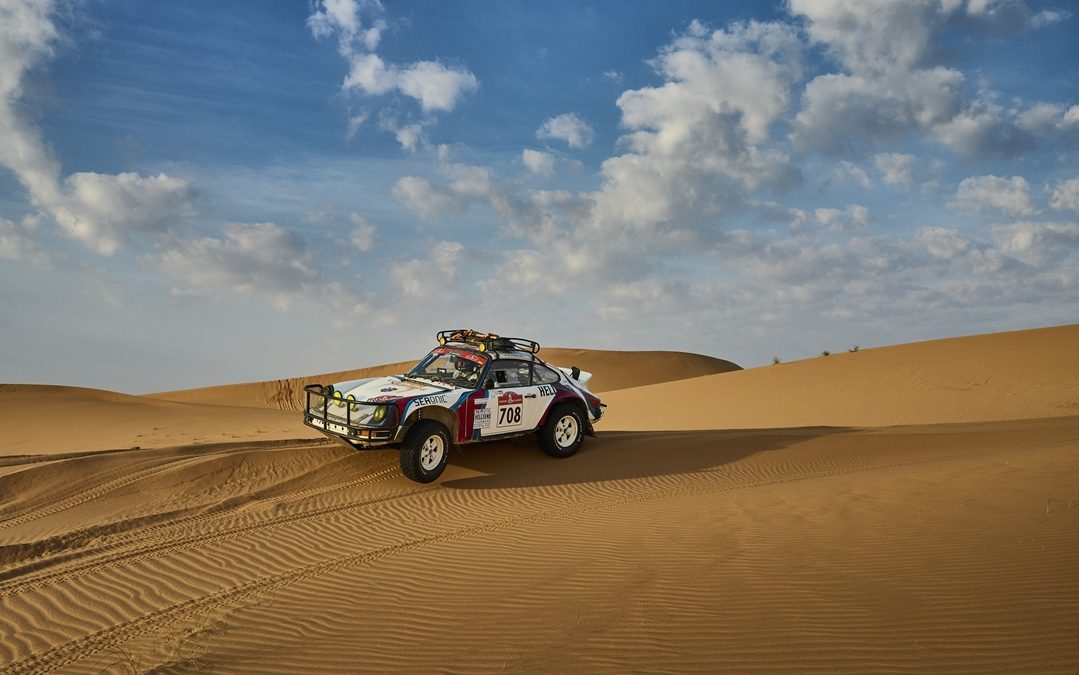Tackling an off-road trail that includes sandy sections and even dunes demands a unique skill set and knowledge to ensure a smooth and safe experience. (And to make sure you don’t get bogged down).
Whether you’re a seasoned off-road enthusiast or a newcomer eager to explore the thrill of sand driving, understanding the nuances of handling a vehicle on sand is essential.
We quizzed Stellenbosch-based rally driver, Puck Klaassen, who is currently tackling the Dakar Classic with her dad for a few tips. Puck has not only grown as a person over the first two weeks of the Dakar but matured massively as a driver. You might not be about to tackle the dunes of Saudi Arabia, but you can definitely learn from her.
Prioritise Momentum over Speed
Puck reflects on her focus on speed admitting, “At first all I cared about was going fast. However, I’ve come to realize that maintaining a steady pace is absolutely vital.” This realization forms the foundation for sand driving highlighting the importance of composure rather than solely relying on speed and the power of the car. Keeping a consistent speed helps your vehicle glide smoothly over the sand, preventing it from getting stuck. Avoid sudden acceleration or deceleration, as these actions may lead to sinking in the soft sand. Puck’s wisdom extends to the significance of momentum and a smooth driving style. She shares, “the key is to maintain continuous, uninterrupted movement without frequent stops. On days when I avoid getting stuck, it’s because I keep the momentum going, rather than alternating between fast and slow.”
Assess Challenges and Maintain Flow
Drawing from her experiences in the 1986 Porsche 911 3.2L 2WD rear-wheel drive, the 21-year-old notes, “On Stage 8, I encountered challenges and got stuck twice when I didn’t maintain good flow. During those instances, I had to pause, assess the situation, and then proceed.” This highlights the necessity of adaptability and a proactive approach when faced with unexpected obstacles.
Throttle Control on Dunes
Puck’s insights extend to throttle control on dunes. “One crucial lesson is not to release the throttle at the top of a dune because the vehicle’s momentum continues. So, the main takeaway is to keep the gas on.” This simple yet vital tip can make all the difference in navigating challenging sandy terrains. In addition, selecting the right gear ahead of an obstacle is crucial. Opt for a higher gear to prevent wheel spin when it comes to soft sand. This provides better control and prevents unnecessary strain on the engine. Engage four-wheel drive (4WD) if your vehicle is equipped with this feature, distributing power to all wheels and enhancing traction.
Approach Drops with Caution
Sharing a hard-learned lesson, Puck advises, “It’s essential to approach drops cautiously, as their length and steepness may be unpredictable. I learned this the hard way on the first day when I went too fast downhill.” When it comes to descending a dune, choose a controlled speed to prevent your vehicle from bouncing uncontrollably down the slope. Engage a lower gear if necessary and use engine braking to maintain control.
In summary, Puck Klaassen’s valuable lessons encapsulate the essence of successful sand driving—prioritizing calm driving, maintaining momentum, avoiding unnecessary stops and approaching challenging drops with caution.
Published by: Ashley Haigh-Smith
MSA Publishes media releases from a host of different sources on our website as a service to the sport. It is not practically possible to vet/approve every release that is published. Some news items and articles are written by correspondents and do not necessarily represent MSA’s views.

